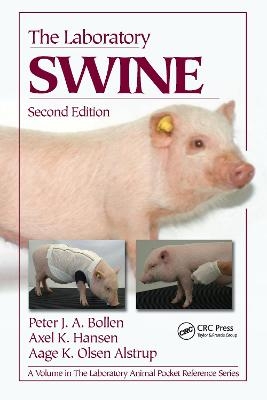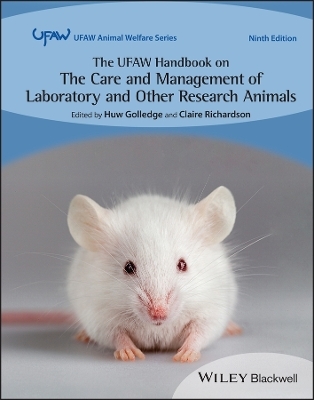
The Laboratory Swine
Crc Press Inc (Verlag)
978-1-4398-1528-1 (ISBN)
Since the popular first edition was published more than a decade ago, the number of swine used in toxicity studies has increased as an alternative to commonly used non-rodent species, such as dogs and primates. A volume in the Laboratory Animal Pocket Reference Series, The Laboratory Swine, Second Edition maintains the high standard set by the previous edition and is poised to continue its legacy as the premier laboratory reference on the care and use of swine in the laboratory.
Emphasizes Humane Care and Use of Laboratory Swine
Addressing the biology, husbandry, management, veterinary care and research applications of both large and miniature swine, this color reference is a complete source of information on the species. It is thoroughly updated and includes a major revision to the anesthetics section. It also places a heightened focus on animal welfare and addresses important considerations related to genetically modified swine. The book is divided into six parts:
Important Biological Features examines everything from different breeds and behavior, to anatomical and physiological features, as well as digestive, cardiovascular, and pulmonary systems
Husbandry addresses housing, nutrition, sanitation, transportation, and more
Management and Quality Assurance looks at the impact of infections on animal research using swine, zoonotic diseases, legal regulations, genetic monitoring, and more
Veterinary Care covers a variety of topics, such as clinical examination, diseases, pain recognition, and post-operative management
Experimental Techniques addresses restraint, sampling techniques, basic surgical procedures, and other issues
Resources provides extensive references for further study, including handbooks, journals, and websites
The Laboratory Swine, Second Edition is ideal for animal caretakers, technicians, investigators, and laboratory animal veterinarians as a single-source reference that contributes to the humane care and use of swine in research.
Peter J.A. Bollen, Ph.D., is the head of Biomedical Laboratory, the central animal facility of the University of Southern Denmark, Odense, where he also received his Ph.D. degree. He studied experimental zoology and laboratory animal science in Utrecht, the Netherlands, and laboratory animal science in London. Axel Kornerup Hansen, Dr. Vet. Sci. DVM, is a professor of Laboratory Animal Science and Welfare at the Royal Veterinary and Agricultural University in Copenhagen, Denmark, from which he also graduated. He is the head of the Department of Veterinary Disease Biology, one of the four veterinary departments at the Faculty of Life Sciences of the University of Copenhagen, Denmark. Aage Kristian Olsen Alstrup, Ph.D. DVM, is a graduate of the Royal Veterinary and Agricultural University in Copenhagen, Denmark, from which he also received his Ph.D. degree. He is responsible for animal models at the PET Center of Aarhus University Hospital, Denmark.
Important biological features. Husbandry. Management and quality assurance. Veterinary care. Experimental techniques. Resources.
| Erscheint lt. Verlag | 23.2.2010 |
|---|---|
| Reihe/Serie | Laboratory Animal Pocket Reference |
| Zusatzinfo | 33 Tables, black and white; 31 Illustrations, color |
| Verlagsort | Bosa Roca |
| Sprache | englisch |
| Maße | 156 x 234 mm |
| Gewicht | 270 g |
| Themenwelt | Veterinärmedizin ► Klinische Fächer ► Versuchstiere |
| Veterinärmedizin ► Großtier | |
| Weitere Fachgebiete ► Land- / Forstwirtschaft / Fischerei | |
| ISBN-10 | 1-4398-1528-3 / 1439815283 |
| ISBN-13 | 978-1-4398-1528-1 / 9781439815281 |
| Zustand | Neuware |
| Informationen gemäß Produktsicherheitsverordnung (GPSR) | |
| Haben Sie eine Frage zum Produkt? |
aus dem Bereich

